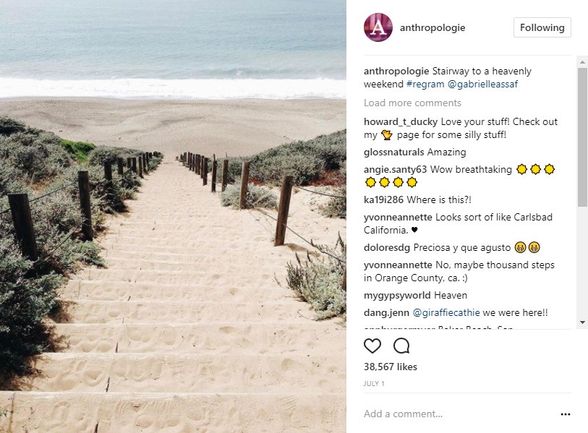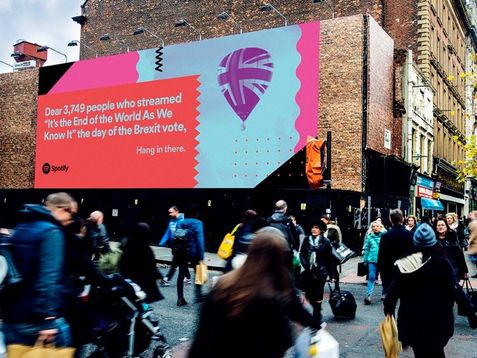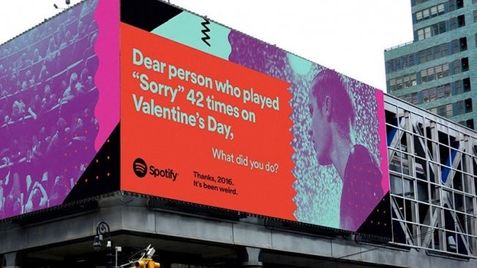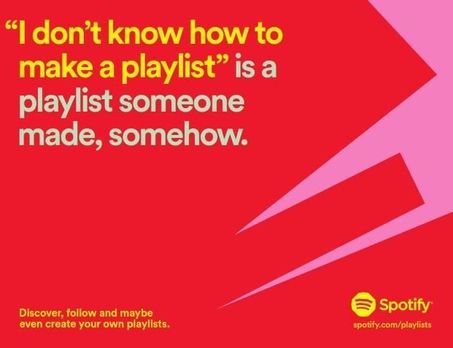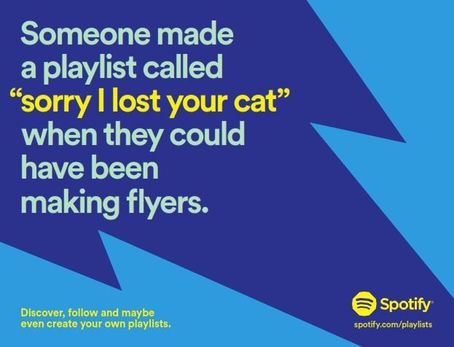3 Lessons from Successful User Generated Content Campaigns
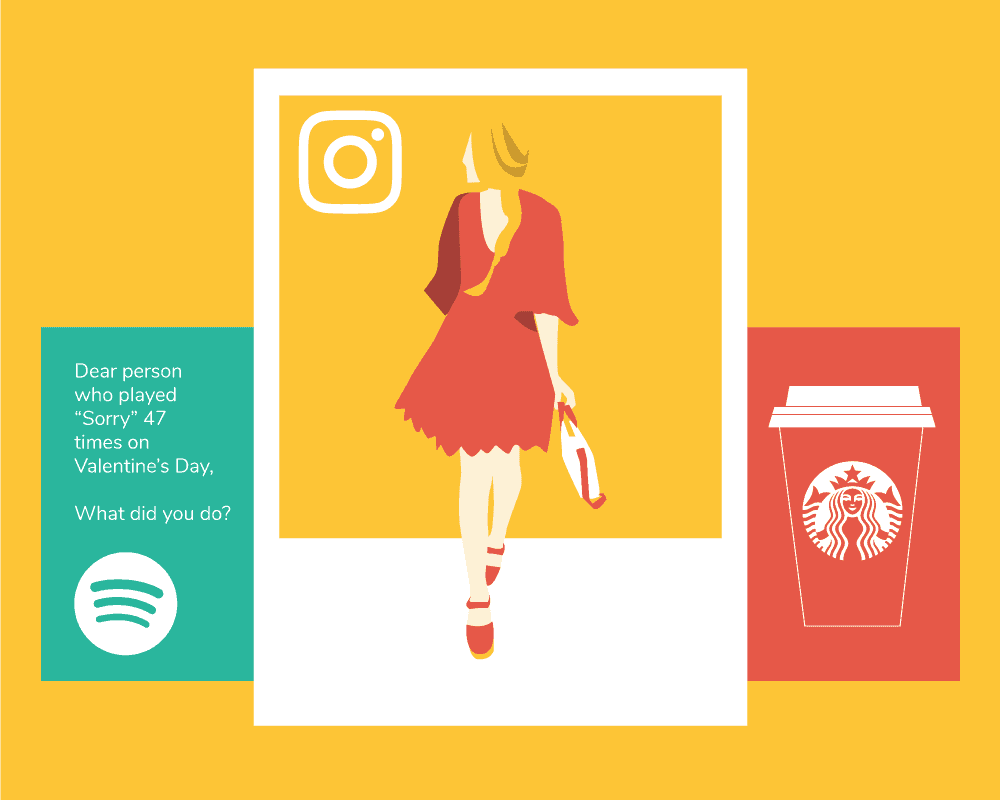
From Anthropologie’s idyllic Instagram to Spotify’s pointed ads, user generated content (UGC) is taking center stage when it comes to content marketing. While your business may not have quite the same reach of these major corporations, we can still learn from their UGC campaigns.
Anthropologie and brand community
Anthropologie is all about aesthetic, and so are their customers. This is evident from their meticulously crafted window displays to carefully curated catalogs and of course, the Anthropologie Instagram feed. Their Instagram is particularly popular, drawing an impressive three million followers, and is a powerful tool that the brand uses not only to put out content but also to bring content back in.
The #anthropologie tag serves as a collection of Anthropologie products and brand-inspired images. By using this tag, customers can gain recognition from fellow customers and even from the store itself. Anthropologie is known to repost photos that fit the brand image.
This UGC strategy serves a dual purpose.
1) It shows customers real people using Anthropologie products in real life, not just content that’s been professionally modeled and photoshopped.
2) It also helps generate a sense of inclusion in the brand community, not just for the people whose photos they share but for their other consumers who see a brand that cares about their lives.
But it’s not all about selling specific pieces. Some posts have little or nothing to do with Anthropologie products. This creates an idea of Anthropologie not only as physical products but as a way of life.
They showcase stunning images of their own and of others and hint at the idea that this could be you. Their Instagram is a pretty, pastel world that we all want to live in. They invite customers into the world. It’s influential to say the least.
Anthropologie has a clear and complete understanding of who their customer is. As a result, they can create content that caters to that customer. Because they are a highly visual brand their message comes across well on image based social sites.
Through their Instagram, they’re able to reach a large number of consumers at once and can create a sense of solidarity regarding the brand. That community has a shared interest and identity. Anthropologie has come to understand their customers so well, they don’t have to use traditional marketing techniques in order to be successful.
When you know who your customer is, it’s easy to incorporate them into your brand community. If you want to learn from Anthropologie, we suggest taking the time to completely understand who you’re targeting. They went beyond mere demographic research and looked at the tastes and preferences of their customers.
By further exploring customers’ lives you can create a more accurate and extensive buyer persona. The further you can take your research, the more you can learn, the more you’ll know and have to work with. The better you understand your customer, the better chance you have of reaching them.
Spotify and user data
Over the past year, Spotify’s use of UGC campaigns has grabbed headlines. At the end of November 2016, they launched their ‘Thanks 2016. It’s been weird,’ campaign. They used specific user data with clever captions to entertain and communicate with current and potential customers.
After the buzz generated by this first UGC campaign, it’s no surprise that they decided to repurpose the same idea with different data. The second time the campaign was centered on user-generated playlists. In these ads, Spotify accompanies actual playlist names with cheeky copy.
In an extension of these ads, Spotify has famous music artists like Alessia Cara and DNCE star in short video clips where the artists discuss and make fun of eccentrically named playlists that their music has been added to (for example, “Global warming is real…let’s dance”).
It also makes a statement about user individuality by recognizing the uniqueness of their customer base. It’s an admittedly creative take on user data, something Spotify’s chief marketing officer Seth Farbman is proud of.
In an interview, he stated, “There has been some debate about whether big data is muting creativity in marketing, but we have turned that on its head. For us, data inspires and gives an insight into the emotion that people are expressing.”
Don’t have a database full of people’s peculiar music choices? Use what’s available to you; use your customer data. It’s reported that “Sixty-four percent of marketing executives ‘strongly agree’ that data-driven marketing is crucial to success in a hypercompetitive global economy.”
The future of advertising and marketing lies in data. So take a tip from Spotify and get creative with what you have. Strengthen your company by using data in personable, original new ways that make an emotional connection.
Spotify always had access to this data, but then it occurred to someone to do something fun with it. You can too.
Starbucks and customer engagement
When Starbucks received customer backlash they decided to use UGC to respond and fix the problem.
It started with the infamous plain red holiday cup controversy of 2015. That’s what led to their now annual #RedCupContest in December.
For the chance to win a brand gift card that puts the bucks in Starbucks, customers decorated and posed with their cups, then posted and tagged them online.
The company then reposted especially creative and artistic interpretations. This helped generate sales since you must buy a red cup to participate.
Then they took things a step further in 2016. Instead of having one special red holiday cup, they had 13, all of which had been created by customers. These customers/artists came from all over the world, including the US, Canada, Russia, and Indonesia to name a few. Each unique design tells a customer’s story.
Regardless of what side of the 2015 holiday cup controversy you’re on, you can learn from how Starbucks handled things.
They listened to the customers who were upset by the plain cups and solved the problem the following year in a creative way that generated a sense of inclusion, community, and holiday spirit.
Listen to your customers and learn from mistakes. Starbucks (and plenty of customers) didn’t have a problem with the plain holiday cup, but others were offended. ‘The customer is always right’ is a dreaded adage that unfortunately applies from everything from the fast food industry to digital marketing.
If you want to keep your customers happy, you need to listen to them. Then you can use their feedback to help solve the issue at hand.
—
Want to learn more about the creative content brands are coming up with? Read our blog post about the fine line between editorial and e-commerce these days.



